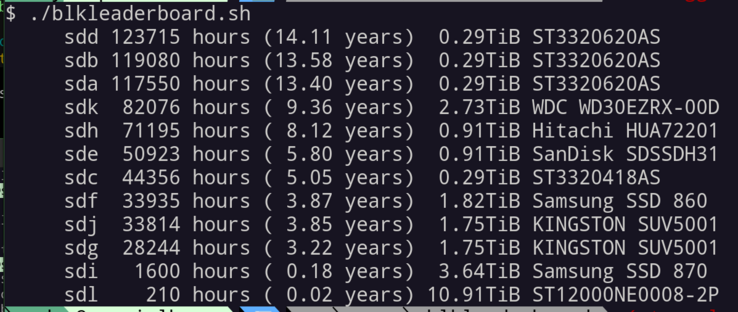2024-05-06 15:56:01
Prosecutor aims to show Trump at center of personal and company finances as Trump Organization controller testifies – live
Trump lawyer McConney acknowledged that Cohen’s reimbursement for $180,000
– which prosecutors allege was falsely recorded as “legal expenses”
– was the only expense in his roughly 35 years at Trump Org he knew of that was grossed up for tax purposes.
2024-05-06 17:35:49
"""
But now consider another accident. A report in the British Medical Journal describes the case of a construction worker who had jumped off some scaffolding. Beneath him, to his horror, was a 15 cm nail that pierced clean through his boot when he landed. The man […] was in agony, tortured by every small movement of his foot. He was given some even more powerful sedatives, fentanyl and midazolam. But when doctors removed the boot they discovered that the nail had not penetrated his foot at all. In fact, it had passed safely between his toes. There was no bodily injury causing the excruciating pain he felt, though it was completely genuine. In his case, however, the experience was produced entirely by his own powerful prediction machinery. Those searing pains were false perceptions created by his brain's predictions (based on the visual evidence) of serious injury and the kinds of feelings that might result.
"""
(Andy Clark, The Experience Machine: How Our Minds Predict and Shape Reality)
Honestly, I think the biggest conceptual leap here is realizing that pain that is neither caused by an injury, nor neuropathic in nature, can be very real and people aren't just "making up" or "imagining" things. The wiring of their brain fires up as in any other instance of pain.
2024-03-06 08:35:59
This https://arxiv.org/abs/2304.07143 has been replaced.
initial toot: https://mastoxiv.page/@arXiv_ees…
2024-04-07 18:32:25
After a busy week with all 4 kids I’ve had negative spoons left to give. I REALLY needed a good sleep this afternoon but C has been on a mission tidying the house. Her scurrying around prevented me from sleeping and gave me a massive guilt complex, so I’m still exhausted and now feeling like a lazy slob.
2024-04-02 11:25:22
Amazon strikes a deal to offer Lionsgate and Starz content to MGM customers in the UK, following similar deals for other European countries and Latin America (Georg Szalai/Hollywood Reporter)
https://www.hollywoodreporter.com/business
2024-04-05 15:53:18
uh oh!
The following warning/error was logged by the smartd daemon:
Device: /dev/disk/by-id/ata-ST3320620AS_3QF00BSV, Self-Test Log error count increased from 0 to 1
$ readlink /dev/disk/by-id/ata-ST3320620AS_3QF00BSV
../../sdd
Maybe you don't make your 15th birthday, sdd. 🙁
Need to speed up with getting shot of this machine.
#Linux
2024-02-29 08:47:00
2024-03-06 08:35:59
This https://arxiv.org/abs/2304.07143 has been replaced.
initial toot: https://mastoxiv.page/@arXiv_ees…
2024-03-06 07:33:24
Search for a $\mu^ \mu^-$ resonance in four-muon final states at Belle II
Collaboration, Adachi, Adamczyk, Aggarwal, Ahmed, Aihara, Akopov, Aloisio, Ky, Asner, Atmacan, Aushev, Aversano, Ayad, Babu, Bae, Bahinipati, Bambade, Banerjee, Bansal, Barrett, Baudot, Baur, Beaubien, Becherer, Becker, Bennett, Bernlochner, Bertacchi, Bertemes, Bertholet, Bessner, Bettarini, Bhuyan, Bianchi, Bilka, Bilokin, Biswas, Bobrov, Bodrov, Bolz, Bozek, Bra\v{c}ko, Branchini, Browder, Budano, Bussino, Campajola, Cao, Casarosa, Cecchi, Cerasoli, Chang, Chang, Cheaib, Cheema, Cheon, Chilikin, Chirapatpimol, Cho, Cho, Cho, Choi, Choudhury, Corona, Cremaldi, Das, Dattola, De La Cruz-Burelo, De La Motte, De Nardo, De Nuccio, De Pietro, de Sangro, Destefanis, Dhamija, Di Canto, Di Capua, Dingfelder, Dole\v{z}al, Dong, Dorigo, Dort, Dreyer, Dubey, Dujany, Ecker, Eliachevitch, Epifanov, Feichtinger, Ferber, Ferlewicz, Fillinger, Finck, Finocchiaro, Fodor, Forti, Frey, Fulsom, Gabrielli, Ganiev, Garcia-Hernandez, Garg, Gaudino, Gaur, Gaz, Gellrich, Ghevondyan, Ghosh, Ghumaryan, Giakoustidis, Giordano, Giri, Glazov, Gobbo, Godang, Gogota, Goldenzweig, Gradl, Grammatico, Graziani, Greenwald, Gruberov\'a, Gu, Gudkova, Halder, Han, Hara, Hayashii, Hazra, Hearty, Hedges, Heidelbach, de la Cruz, Villanueva, Higuchi, Hoek, Hohmann, Horak, Hsu, Humair, Iijima, Inguglia, Ipsita, Ishikawa, Itoh, Iwasaki, Jackson, Jacobs, Jang, Ji, Jia, Jin, Joo, Junkerkalefeld, Kalita, Kandra, Kang, Karyan, Kawasaki, Keil, Kiesling, Kim, Kim, Kim, Kim, Kindo, Kinoshita, Kody\v{s}, Koga, Kohani, Kojima, Korobov, Korpar, Kovalenko, Kowalewski, Kraetzschmar, Kri\v{z}an, Krokovny, Kuhr, Kumar, Kumar, Kumar, Kumara, Kunigo, Kuzmin, Kwon, Lacaprara, Lai, Lam, Lanceri, Lange, Laurenza, Lautenbach, Leboucher, Le Diberder, Lee, Levit, Lewis, Li, Li, Li, Li, Libby, Liu, Liu, Liu, Liventsev, Longo, Lueck, Lyu, Ma, Maggiora, Maharana, Maiti, Maity, Mancinelli, Manfredi, Manoni, Mantovano, Marcantonio, Marcello, Marinas, Martel, Martellini, Martini, Martinov, Massaccesi, Masuda, Matsuoka, Matvienko, Maurya, McKenna, Mehta, Meier, Merola, Metzner, Milesi, Miller, Mirra, Miyabayashi, Miyake, Mizuk, Mohanty, Molina-Gonzalez, Mondal, Moneta, Moser, Mrvar, Mussa, Nakamura, Nakao, Nakazawa, Charan, Naruki, Narwal, Natkaniec, Natochii, Nayak, Nayak, Nazaryan, Niebuhr, Nishida, Ogawa, Onishchuk, Ono, Onuki, Oskin, Otani, Pakhlova, Panta, Pardi, Parham, Park, Park, Paschen, Passeri, Patra, Paul, Pedlar, Peschke, Pestotnik, Piccolo, Piilonen, Angioni, Podesta-Lerma, Podobnik, Pokharel, Praz, Prell, Prencipe, Prim, Purwar, Rados, Raeuber, Raiz, Rauls, Reif, Reiter, Remnev, Ripp-Baudot, Rizzo, Robertson, Roehrken, Roney, Rostomyan, Rout, Russo, Sanders, Sandilya, Santelj, Sato, Savinov, Scavino, Schmitt, Schwanda, Schwickardi, Seino, Selce, Senyo, Serrano, Sevior, Sfienti, Shan, Shen, Shi, Shillington, Shimasaki, Shiu, Shtol, Sibidanov, Simon, Singh, Skorupa, Sobie, Sobotzik, Soffer, Sokolov, Solovieva, Spataro, Spruck, Stari\v{c}, Stavroulakis, Stefkova, Stroili, Sumihama, Sumisawa, Sutcliffe, Svidras, Takizawa, Tamponi, Tanaka, Tanida, Tenchini, Tittel, Tiwary, Tonelli, Torassa, Trabelsi, Tsaklidis, Uchida, Ueda, Unger, Unno, Uno, Uno, Urquijo, Ushiroda, Vahsen, van Tonder, Varvell, Veronesi, Vinokurova, Vismaya, Vitale, Vobbilisetti, Volpe, Wach, Wakai, Wallner, Wang, Wang, Wang, Wang, Warburton, Watanuki, Wessel, Won, Xu, Yabsley, Yamada, Yan, Yang, Yelton, Yin, Yoshihara, Yuan, Yusa, Zani, Zhang, Zhilich, Zhou, Zhou, Zhukova
https://arxiv.org/abs/2403.02841 https://arxiv.org/pdf/2403.02841
arXiv:2403.02841v1 Announce Type: new
Abstract: We report on a search for a resonance $X$ decaying to a pair of muons in $e^{ }e^{-}\rightarrow \mu^ \mu^- X$ events in the 0.212-9.000 GeV/$c^{2}$ mass range, using 178 fb$^{-1}$ of data collected by the BelleII experiment at the SuperKEKB collider at a center of mass energy of 10.58 GeV. The analysis probes two different models of $X$ beyond the standard model: a $Z^{\prime}$ vector boson in the $L_{\mu}-L_{\tau}$ model and a muonphilic scalar. We observe no evidence for a signal and set exclusion limits at the 90\% confidence level on the products of cross section and branching fraction for these processes, ranging from 0.046 fb to 0.97 fb for the $L_{\mu}-L_{\tau}$ model and from 0.055 fb to 1.3 fb for the muonphilic scalar model. For masses below 6 GeV/$c^{2}$, the corresponding constraints on the couplings of these processes to the standard model range from 0.0008 to 0.039 for the $L_{\mu}-L_{\tau}$ model and from 0.0018 to 0.040 for the muonphilic scalar model. These are the first constraints on the muonphilic scalar from a dedicated search.
2024-05-05 18:13:42
"""
Predictive processing also sheds considerable light on a wide range of typical and atypical forms of human experience. A good starting point is to notice that there are two very broad ways for such processing to go wrong. The first is for the brain to underweight predictions and expectations. This will make it hard to detect faint but predictable patterns in a noisy or ambiguous environment. But the second general way to go wrong is for the brain to overweight expectations. In extreme cases, overweighting results in hallucinations. You seem to see and hear things that aren't there, just because […] they are at some level strongly expected.
Autism spectrum condition was initially thought to reflect a specific imbalance of the first kind — a systematic underweighting of prior expectations. […] Underweighting prior knowledge would make weak or elusive patterns hard to detect, and hard to learn too. Such patterns would include things like facial expressions, intonation, or body language, things that delicately hint, in context, at other people's mental states and attitudes. An imbalance of that kind would also make it very hard to learn these patterns in the first place, and even harder to recognize them in situations that are complicated or ambiguous. Recent evidence casts subtle doubt, however, on this bald initial hypothesis. Rather than weakened predictions, intriguing evidence is emerging that suggests that the core issue involves (not underweighting knowledge-based predictions but) actively overweighting the incoming sensory evidence.
[…]
She doesn't just feel "hunger," instead the more fine-grained specifics of the bodily signals dominate. You are feeling a whole lot of something — but what is it? According to the overweighted sensory information theory, autism spectrum condition individuals constantly encounter an excess of highly detailed and apparently very salient sensory information of this kind, coming from both inside their own body and the outside world. This sensory excess impedes the moment-by-moment identification of the broader context or scenario (in this case, hunger). In other words, the emphasis on every aspect of sensory detail effectively makes it impossible to spot the larger forest for the trees.
"""
(Andy Clark, The Experience Machine: How Our Minds Predict and Shape Reality)
#ActuallyAutistic


